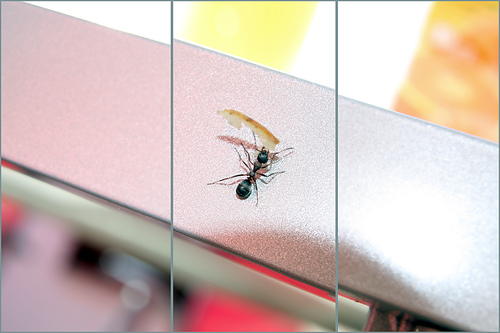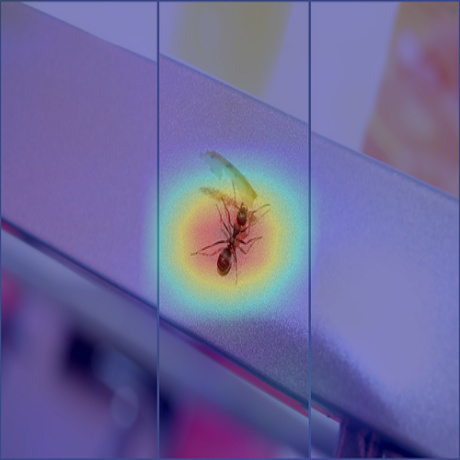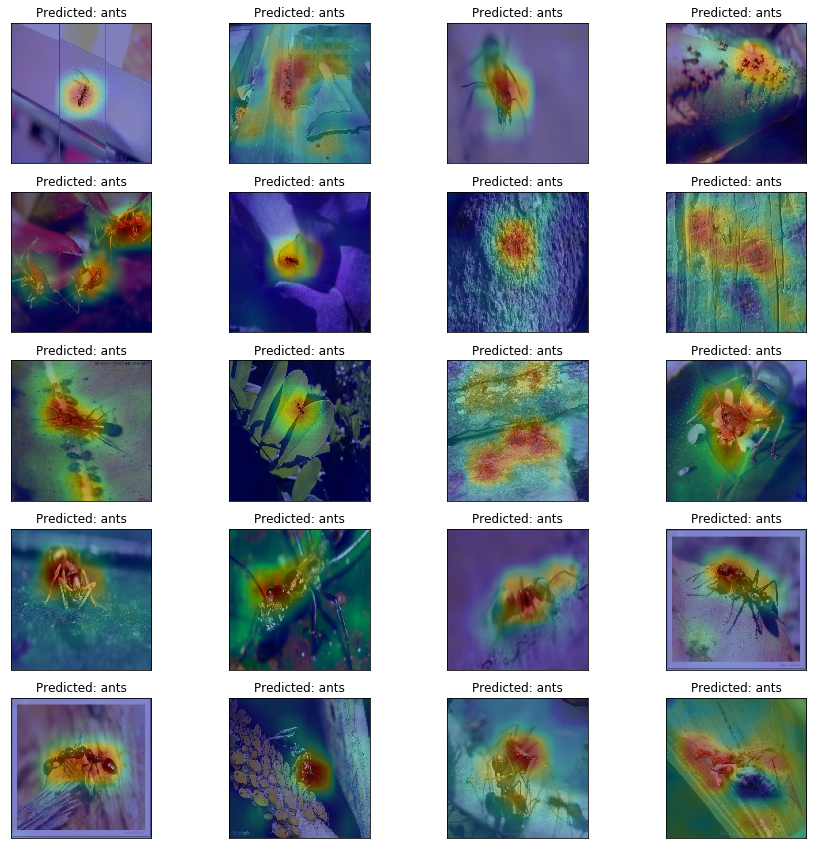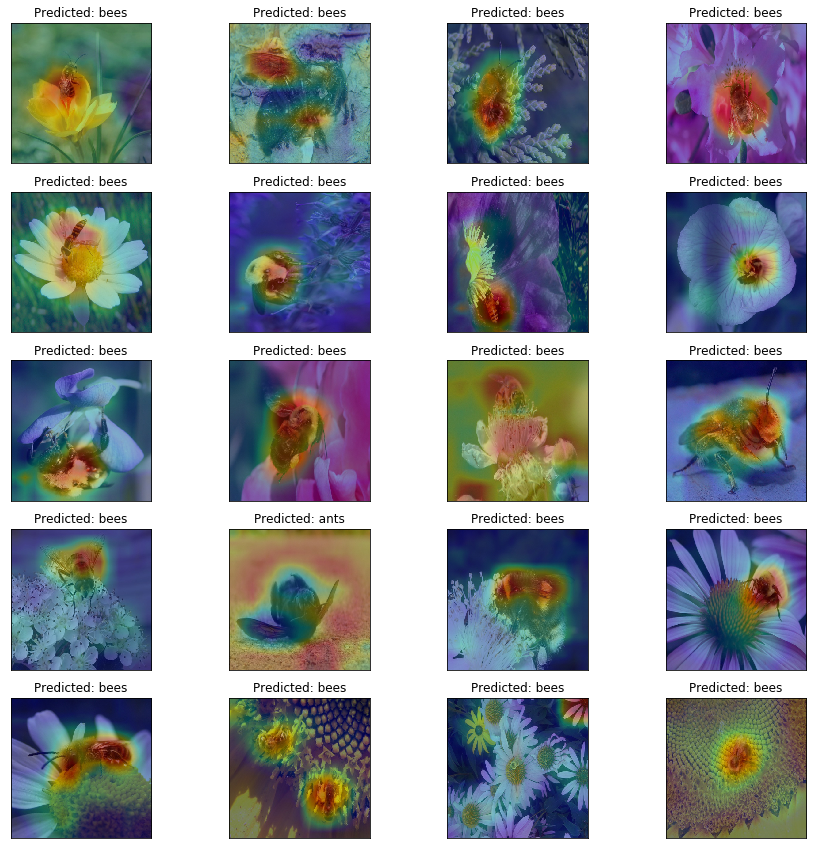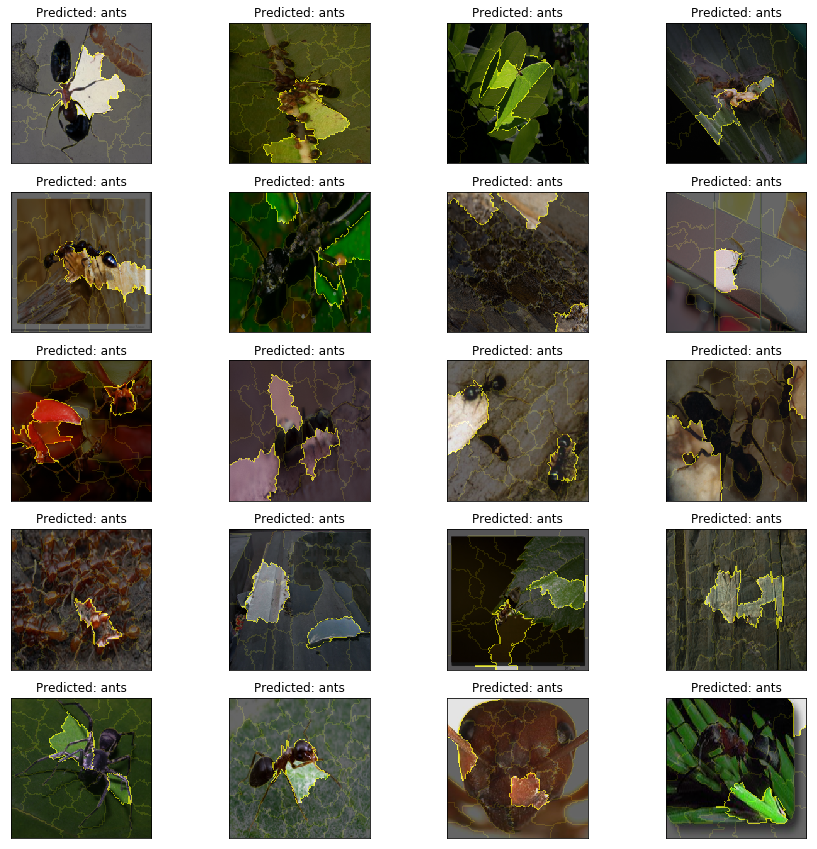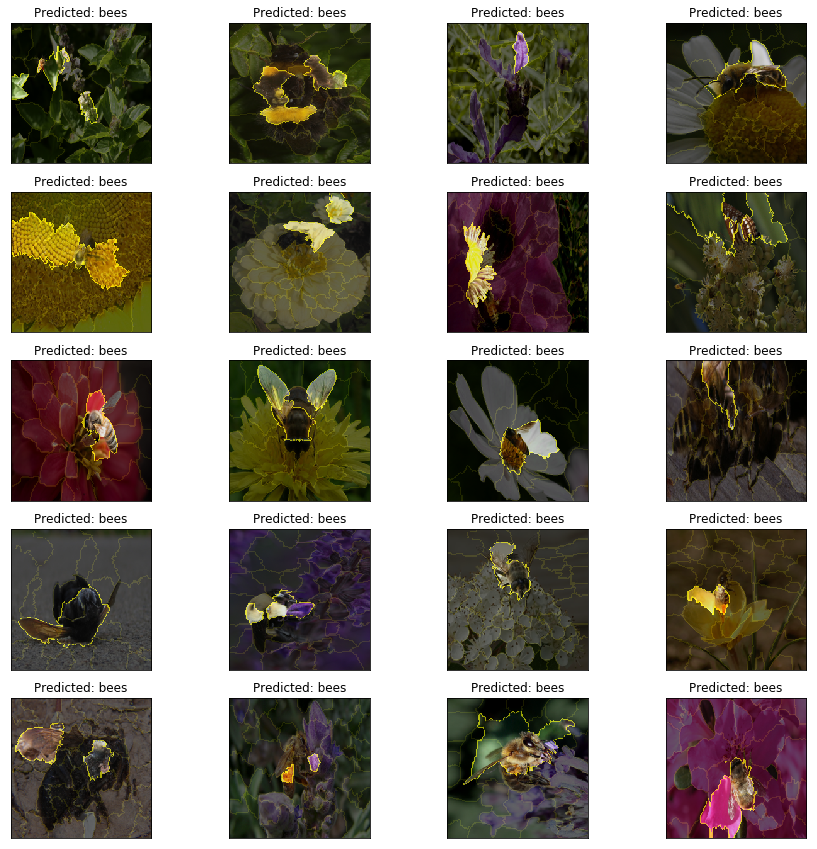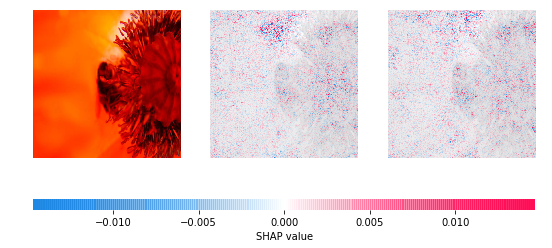This repository introduces different Explainable AI approaches and demonstrates how they can be implemented with PyTorch and torchvision. Approaches used in this Jupyter notebook are:
The notebook uses the PyTorch hymenoptera dataset, which can be downloaded here. The dataset consists of 397 images of bees and ants which were split into a train, test and validation set as follows:
| Class | Train | Test | Validation | Total |
|---|---|---|---|---|
| Bees | 130 | 41 | 33 | 204 |
| Ants | 124 | 38 | 31 | 193 |
The notebook allows to perform transfer learning using various pretrained models from torchvision. The list includes:
- Densenet-161
- ResNet-152
- ResNet-101
- Inception v3
- ResNeXt-50-32x4d
- ResNeXt-101-32x8d
The user is also able to adjust the input size of the model in the parameters section (see parameters section below).
All relevant settings can be adjusted in the third cell of the notebook. These parameters adjust the following:
DATA_DIR: Directory of the image dataset. The image dataset is expected to have the same folder structure as the hymenoptera dataset in this repository.MODEL_NAME: Name of the pretrained model that should be used in the notebook. Possible values are densenet161, resnet152, resnet101, inception, resnext50, resnext101NUM_CLASSES: Number of classes for the image classification task. For the hymenoptera dataset the number of classes is 2.FIXED_FEATURE_EXTRACTOR: Set to true, if you want to fix the model weights and only retrain the final output layer.INPUT_SIZE: Input size of the images.BATCH_SIZE: Size of each batch during training. How many samples per batch to load.SHUFFLE: Set to true to have the data reshuffled at every epoch.NUM_WORKERS: How many subprocesses to use for data loading. 0 means that the data will be loaded in the main process.LEARNING_RATE: Initial learning rate that should be used for training.USE_ADAM_OPTIM: Set to true, if you want to use the Adam optimizer. Set to false, if you want to use the SGD optimizer.MOMENTUM: Hyperparameter of the SGD optimizer.BETA_1,BETA_2,EPSILON,WEIGHT_DECAY: Hyperparameters of the Adam optimizer.NUM_EPOCHS: Number of epochs in the training process.DECAY_STEP_SIZE,GAMMA: Hyperparameters of the StepLR learning rate scheduler.BASE_LR,MAX_LR,STEP_SIZE_UP,STEP_SIZE_DOWN,MODE_CYCLIC: Hyperparameters of the cyclic learning rate scheduler.MODE_PLATEAU,FACTOR,PATIENCE,COOLDOWN,MIN_LR: Hyperparameters of the ReduceLROnPlateau learning rate scheduler.RANDOM: Number for random seed.
WIP
- Improve SHAP results (not working yet with provided models)
- Adjust data augmentation
- Make use of BCELoss
- Adjust and improve learning rate
- Handle different class sizes
